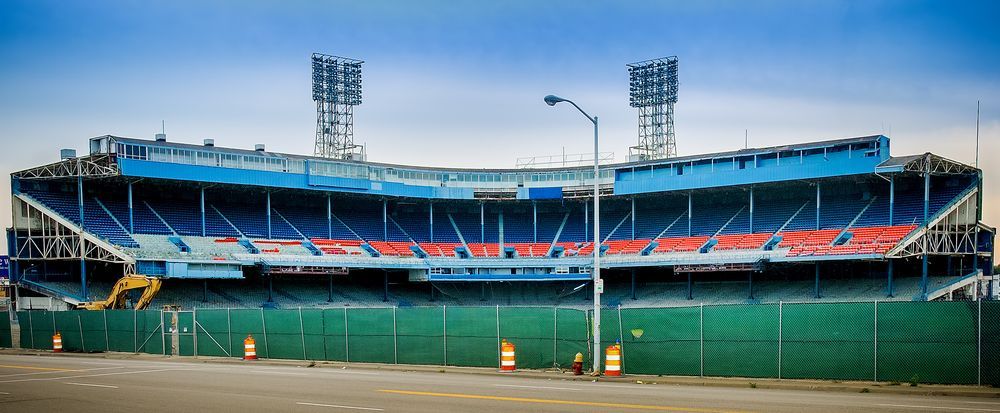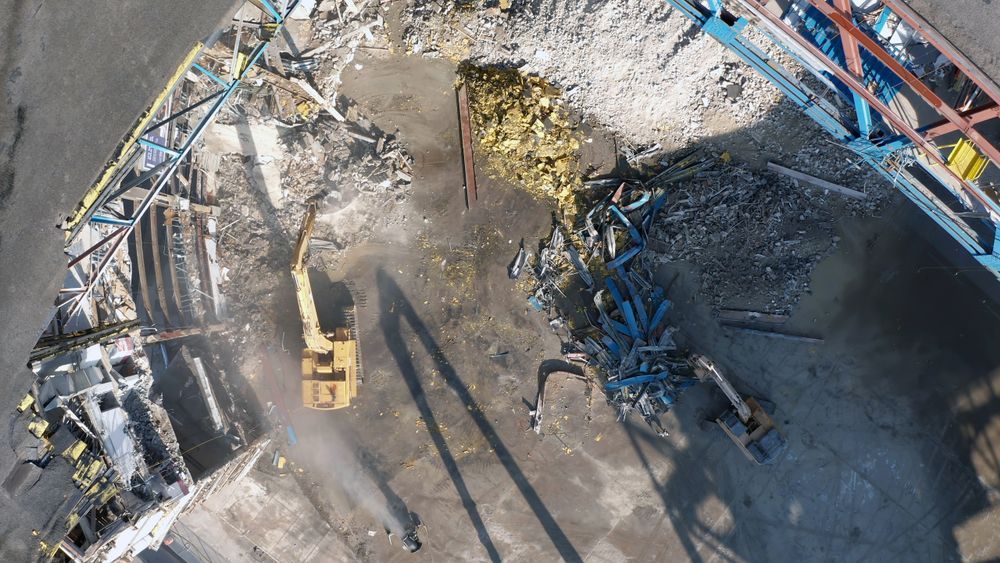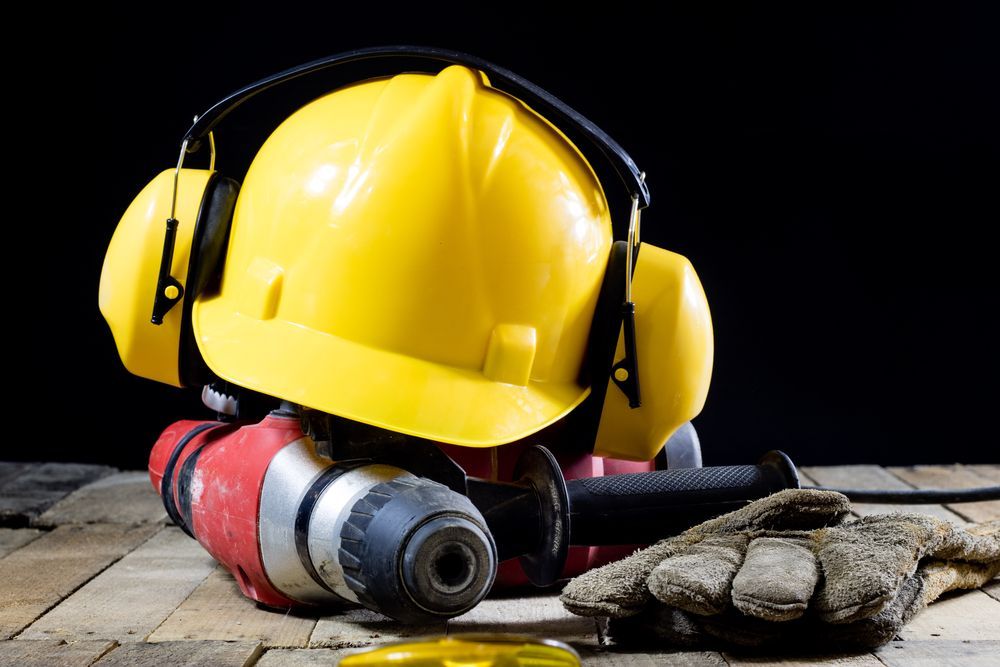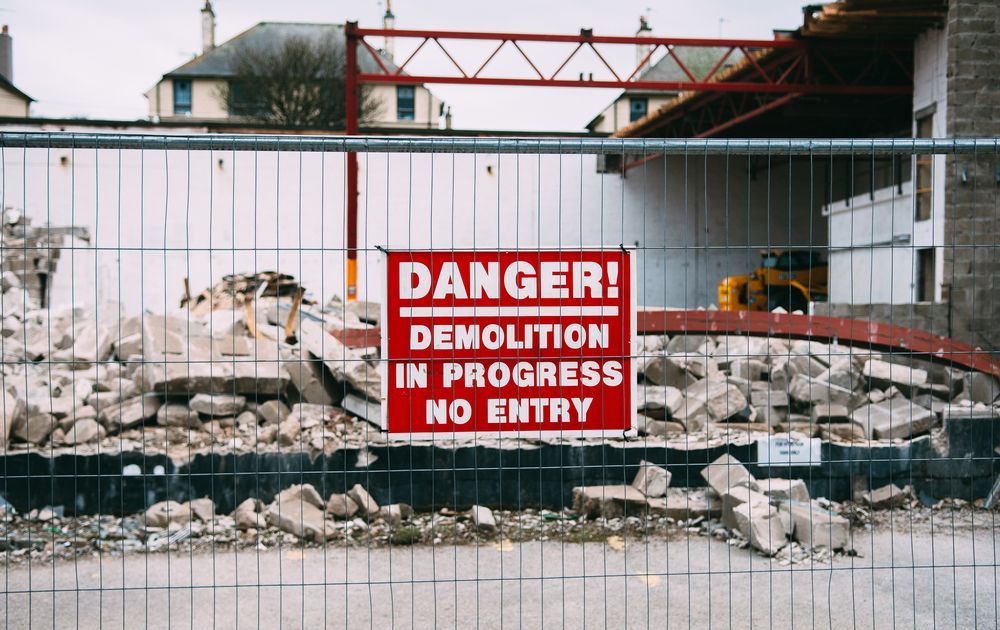Stadium Demolition Projects Guide
Share this article:
Written by: Alpine Demolition

With proper care and maintenance, it's estimated that sports stadiums can last anywhere from 30 to 50 years before either significant renovations or demolition is necessary. But in reality, stadiums are likely to be demolished much sooner than that to make way for newer, better stadiums that meet both the needs of sports teams and offer fans a first-class experience.
Fenway Park in Boston has been the home ballpark of the Red Sox since opening its doors in 1912 - but this isn't the norm in the sports world these days. Fans are less attached to stadiums and more attached to a great experience when they attend games. You often don't get this without regular renovations and upgrades to older stadiums. Rather than investing in aging stadiums, many teams instead opt to demolish them and build new, state-of-the-art venues.
In this post, we'll discuss stadium demolition - from planning and preparation to challenges to safety best practices. Read on to learn more or contact Alpine Demolition for more information today.
Stadium Planning and Preparation
Planning to demolish a major sports stadium isn't much different than planning the demolition of any building or structure in that local, state, and federal requirements must all be met. Here's a look at some of what must be done before the wrecking ball can swing or the explosives can be placed on a stadium demolition:
- Thorough building inspection: We'll get into more of some of the environmental hazards that may come into play later in this post, but the bottom line is that if you don't have the property adequately inspected, you may not be aware of such threats.
- Building inventory: Stadiums have a lot of sentimental meaning to the local communities they're located in and to avid sports fans who cherish memories of watching their favorite teams play in such venues. That said, many items are salvaged before demolition and auctioned off, sold, or donated.
- Staffing: Sports stadium demolitions tend to be large endeavors that require a significant workforce. Ensuring that the project is properly staffed is another major consideration achieved during this stage.
- Demolition type: There are various types of demolition that contractors can move forward with on a stadium project. Many large stadiums are often imploded, but selective demolition and the use of wrecking balls are also common if it's determined that the building isn't suitable for implosion.
Challenges and Considerations
One of the biggest challenges in any demolition job is preparing for the unexpected. Initial building inspections may reveal an environmental hazard, such as lead, asbestos, or some other toxic chemical that could pose a threat to workers or the surrounding environment.
Other challenges that demolition contractors may encounter on stadium demolitions include staffing a project properly, considering whether the site is a historic landmark (something that you may run into with older stadiums), and cost control and contingency planning.

Environmental Safety Protocols
If asbestos, lead, or other toxic chemicals are identified on the stadium's site, they'll likely need to be properly remediated or removed before demolition can begin. Otherwise, it could pose a major environmental hazard to the surrounding area and site workers.
Take asbestos, for example. Many buildings were commonly built with asbestos-containing materials from the 1970s through the 1990s. When these materials are undisturbed, they're not hazardous. But when they are disturbed, which is only natural during demolition, they release asbestos fibers into the air. These fibers can embed into lung tissue and cause various illnesses over time. Hence, it's important to properly address asbestos and other threats before demolition begins.
Equipment and Techniques
For larger football stadiums and even some baseball stadiums, implosion is often the preferred method of demolition. When properly planned and executed, implosion brings down a building in seconds and cleanup and site clearing can thereby begin. Other popular techniques for stadium demolition include:

- Selective demolition: If part of the site or some of the structure is intended to be preserved, selective demolition is the right method for the job. Also known as "deconstruction," this method tends to work well for upgrades, extensions, or intentions to reuse or repurpose the site.
- Wrecking ball: While uncommon due to the amount of dust and debris that it creates, using a wrecking ball to demolish a stadium is still a fast, effective means.
- Excavator demolition: This method involves the use of excavators to topple a building or structure. The excavators are outfitted with attachments that include shears, crushers, and hammers to smash into stadiums and bring them down.
Aside from the method of demolition, various materials can also be recycled from the stadium site. Take concrete, for example. A common material used in any building project, especially in stadiums, any excess concrete can be crushed on site and repurposed as backfill material or as a base for infrastructure projects.
Case Studies
At Alpine Demolition, we pride ourselves on our experience with all different types of demolition, stadium demolition included. One example is the selective demolition we did to make way for an expansion to Wrigley Field, home of the Chicago Cubs. Our work consisted of demolishing concrete ramps, block walls, and bathrooms from a section of the historic ballpark in the off-season. Just as we do with every demolition project, we put together a plan and executed the plan. We performed the demolition on schedule and without incident.
We've also completed stadium demolitions of Northwestern's Ryan Field and a grandstand in Arlington Park.
Contact Alpine for Local Stadium Demolition
To learn more about stadium demolition, contact us at Alpine Demolition today. With more than 60 years of best-in-class commercial demolition to our name, we pride ourselves on working safely, staying on schedule and on budget, and being transparent throughout every job. We've completed more than 2,000 demolition projects - including many stadium projects - and boast an industry-leading 95 percent customer satisfaction rate and a safety record that bests most in the demolition business. Contact us today to learn more.



